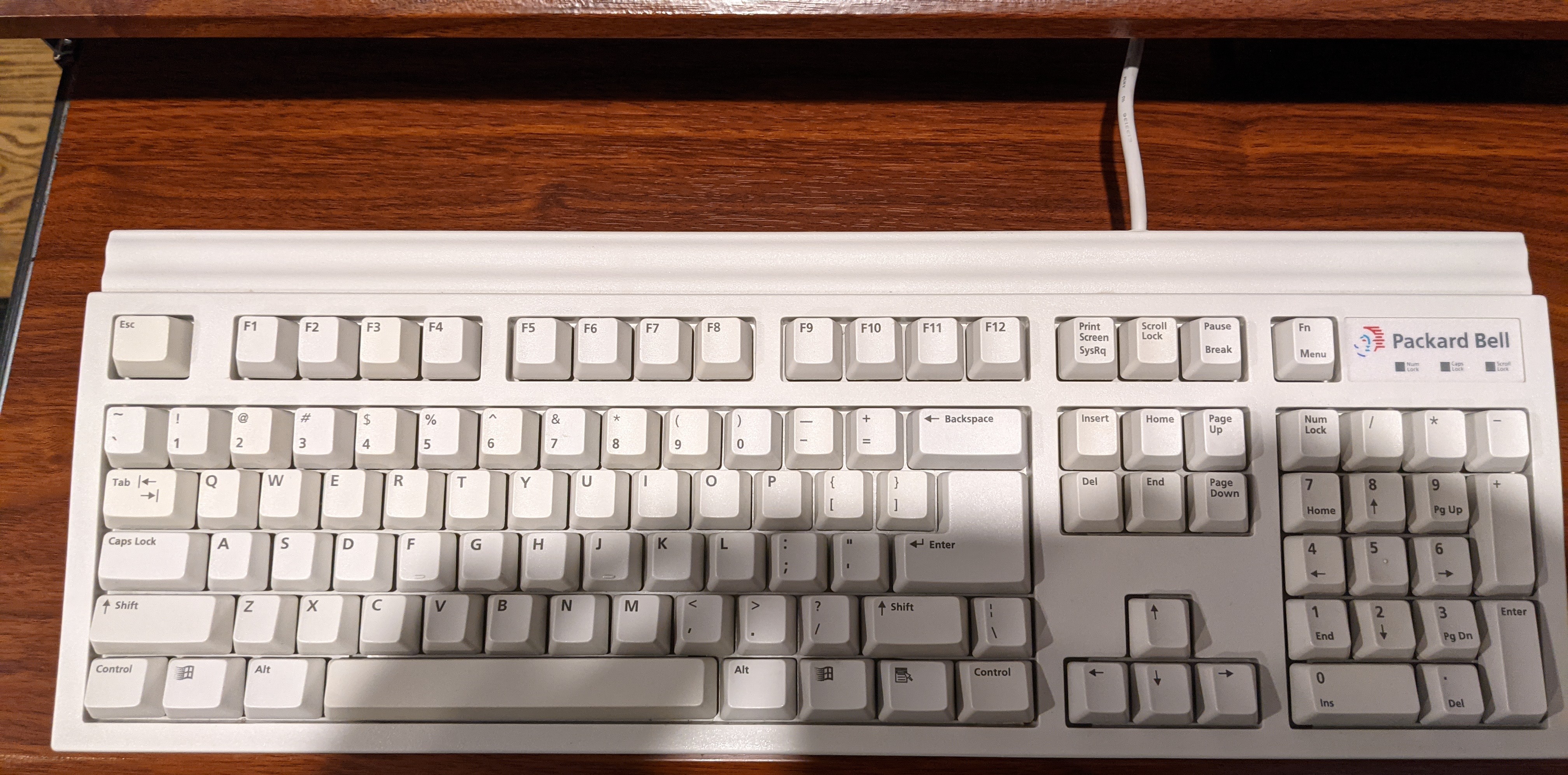Packard-Bell 5131C PS/2 Keyboard Review

This is the Packard-Bell 5131C keyboard. I'm unsure of the original retail price, but I acquired mine at an estate sale for only 5 USD. This keyboard is a joy to type on. It is a membrane keyboard, but I find it to be absolutely incredible. It's not super loud, but it is louder than most membrane keyboards. Of course, this is no where near as loud as most mechanical keyboards, especially a MX Blue-style switch. It is louder than my old keyboard, which has linear switches. But noise is irrelevant if the typing experience is not to par.
And in this case, it is far past par. The pressure required to press each key is a little higher than I am used to, however the bump in the middle is very satisfying, the feel of it bottoming out is consistent, and the spring-back force is arguably the best part, especially for larger keys like the spacebar. Of course, its not all praise, there are a few issues.
For one, the layout is... interesting. For the most part, it is a standard full-size keyboard layout. the Escape key is slightly longer, maybe half a centimeter, but my main complaint is with the Enter key. It's very abnormally shaped, complying netiher to US or EU layouts, with the standard length of a US Enter key, but the height of an EU enter key. As such, the right shift key is shorter, and the Backslash/Pipe key is moved below enter. However, with time one gets used to this quickly. A benefit to the layout on this keyboard, it actually supports Cherry MX-style keycaps! However, finding one for that Enter key would not be easy.
Overall, this keyboard is absolutely fantastic. One last thing to note is the interface. This is a PS/2 keyboard, which means a few things. For one, if your motherboard (or laptop) doesn't support PS/2, you'll need to purchase a PS/2 to USB adapter, which also means you lose one of the main benefits of PS/2, being how early the drivers for it are loaded. Say your system is encrypted with LUKS, so you have to boot into your initramfs to input a passphrase. This keyboard is loaded immediately in the initramfs, while a USB keyboard would take a second or two. Same thing applies to the BIOS setup. The other thing to note is N-Key Rollover. PS/2 fully supports N-Key Rollover, which is the count of how many keys one can push at once and still have registered. In fact, PS/2 supported N-Key Rollover before USB did. However, it is reliant on keyboard support, and in this case, I seem to get around 3 or 4 keys to be detected at once, so it might not be the best for gaming, depending on your usage. Even still, I wholeheartedly reccomend this keyboard.